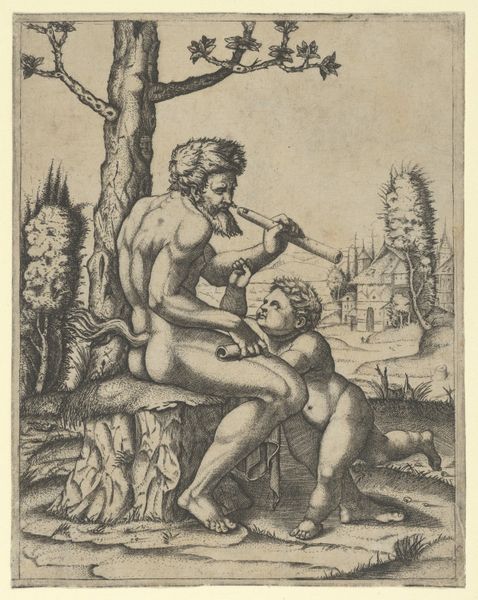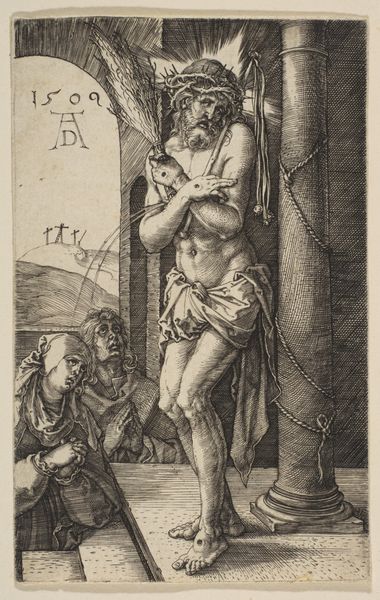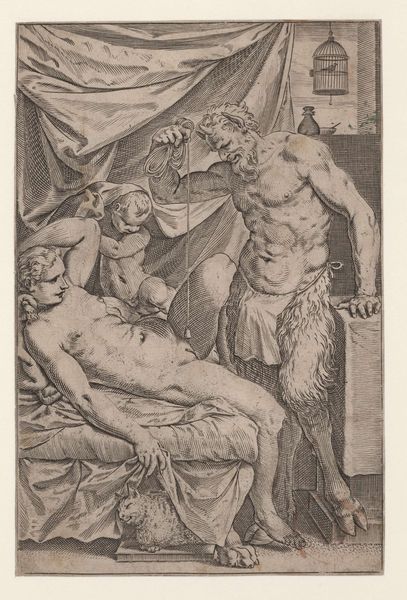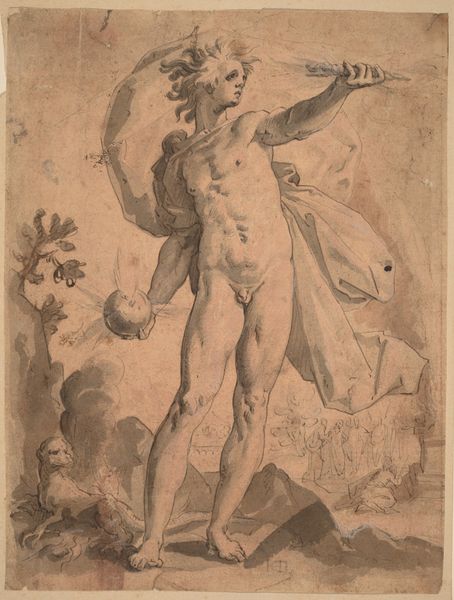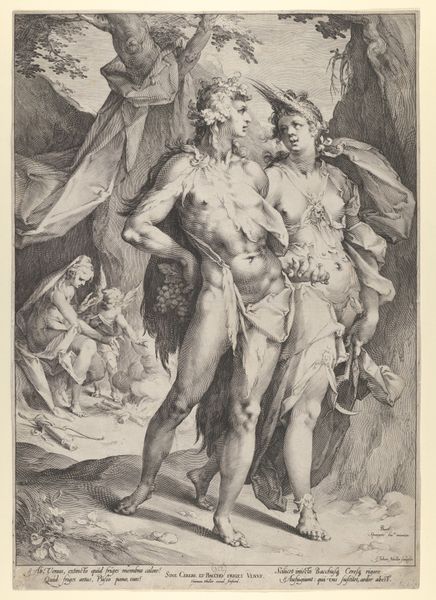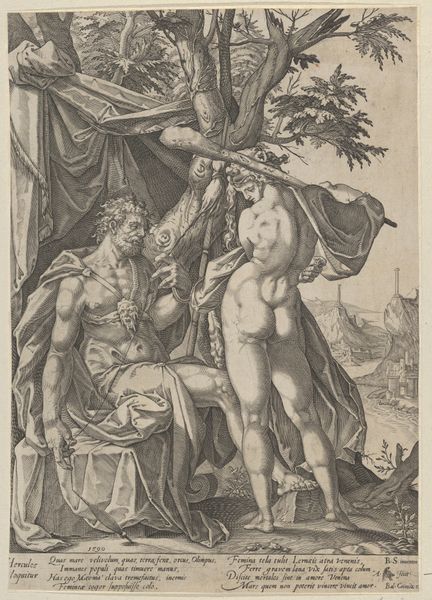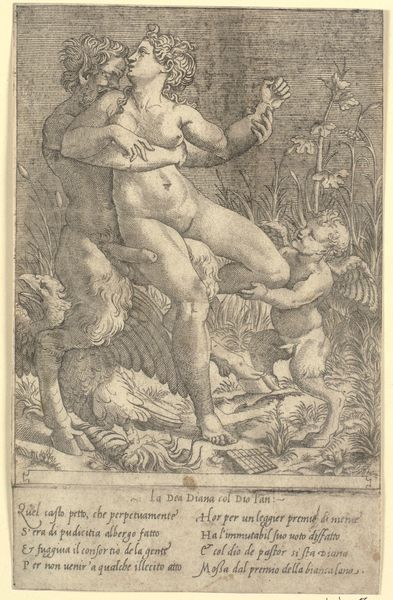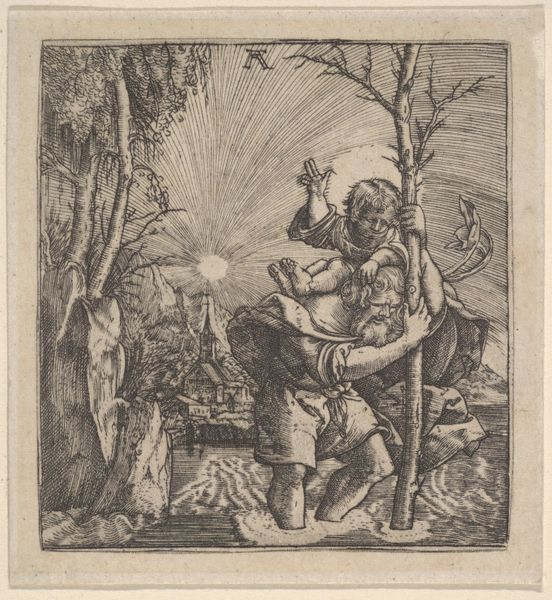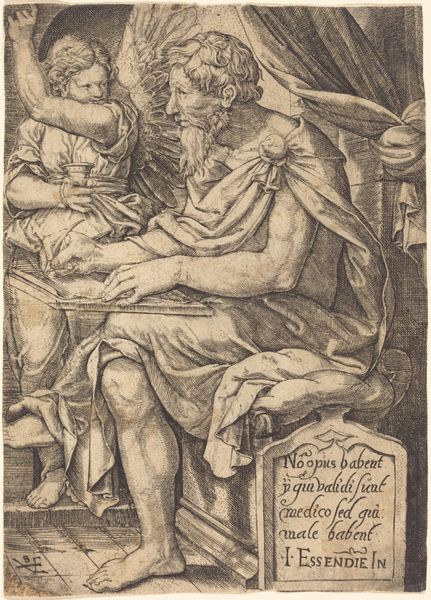
The Risen Christ as a Gardener appearing to Mary Magdalene c. 1600
0:00
0:00
print, engraving
#
baroque
# print
#
figuration
#
history-painting
#
engraving
Dimensions: 10 9/16 × 8 11/16 in. (26.83 × 22.07 cm) (plate)11 × 9 1/16 in. (27.94 × 23.02 cm) (sheet)
Copyright: Public Domain
Editor: Here we have "The Risen Christ as a Gardener appearing to Mary Magdalene," an engraving from around 1600 by Aegidius Sadeler II. The figure of Christ, rendered as a gardener, has such a strong, yet gentle presence. What strikes you about the symbolism in this work? Curator: It’s fascinating how this scene utilizes pre-existing visual vocabulary. The gardener motif, while seemingly simple, builds upon the ancient symbolic connections between gardens and paradise, life, and resurrection. Christ’s gesture, combined with the garden tools, speaks to his active role, not just in redemption, but in nurturing new life, literally and spiritually. Notice also the contrast with Mary Magdalene, who holds an unguent jar representing anointment and mourning. Her gesture seems to reflect the transition of grief to an awareness of renewal. Where does she appear to be directing her sight? Editor: It appears that she looks away, beyond Christ. Curator: Precisely. It is almost as if she is searching and questioning; is the gesture symbolic of the beginning of understanding? What we observe here is the very real intersection of grief and revelation and an exchange of traditional gender roles within religious painting. These symbols collectively work as visual shorthand for centuries of evolving theological interpretation. Editor: So the symbols connect the viewers across time to the original meaning. That's very profound. It gives new appreciation for the work and highlights its layers of meaning. Curator: Indeed, that intersection is key to grasping not only the artwork's aesthetic achievement, but its rich cultural weight and the continued conversation about faith, perception, and reality across eras.
Comments
minneapolisinstituteofart over 1 year ago
⋮
Aegidius Sadeler Sadeler was the court engraver to Emperor Rudolf II and his successors, Matthias and Ferdinand II. Sadeler’s brilliant engraving style and technique are indebted to the work of Hendrik Goltzius. In addition to engraving portraits, he worked plates based on the designs and paintings of major artists—here the work of Bartholomeus Spranger. The engraving shows the risen Christ’s encounter with Mary Magdalene, who initially mistakes him for the gardener (John 20:11-18). He raises his wounded hand, famously saying “Noli me tangere.” (Do not touch me.)
Join the conversation
Join millions of artists and users on Artera today and experience the ultimate creative platform.


